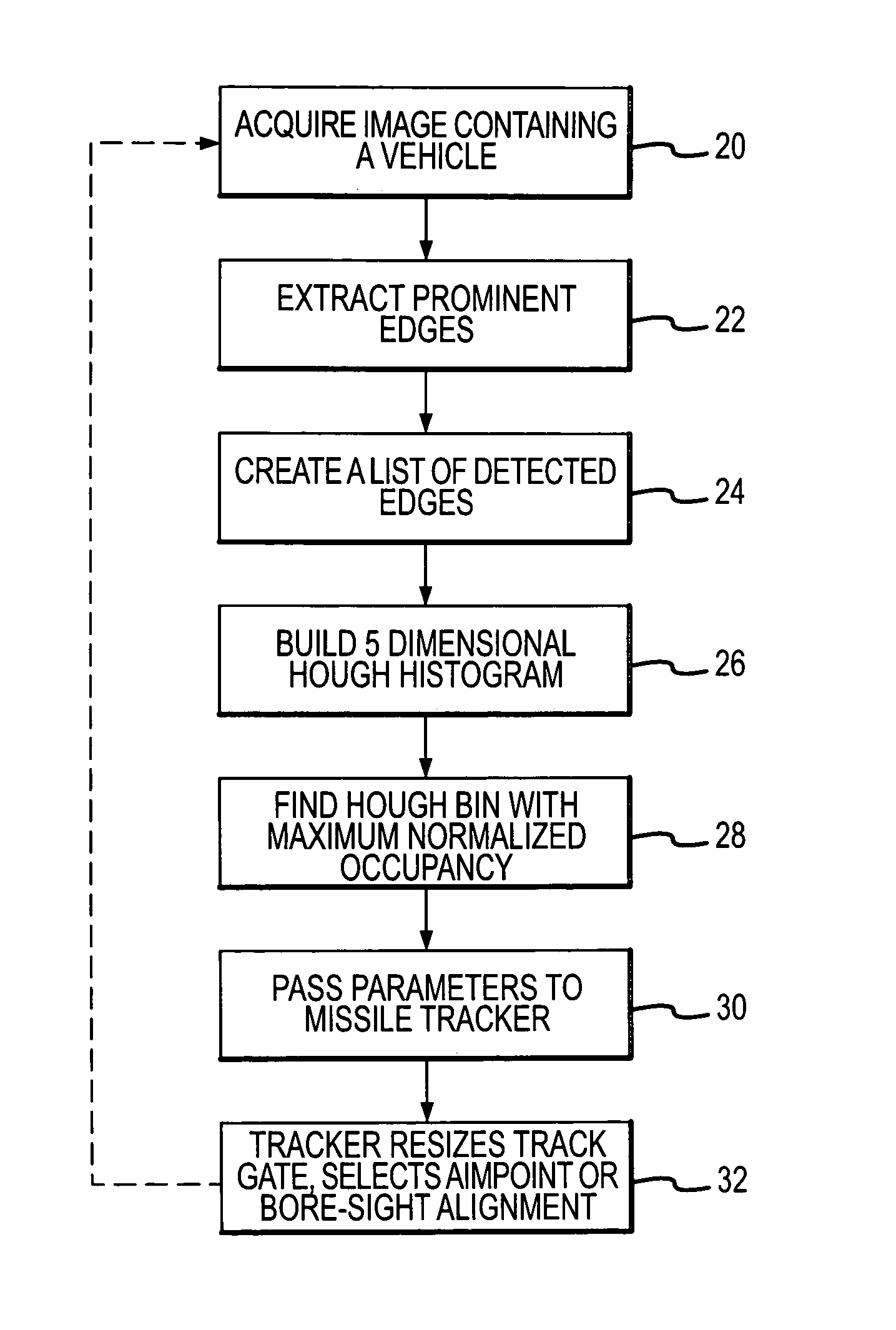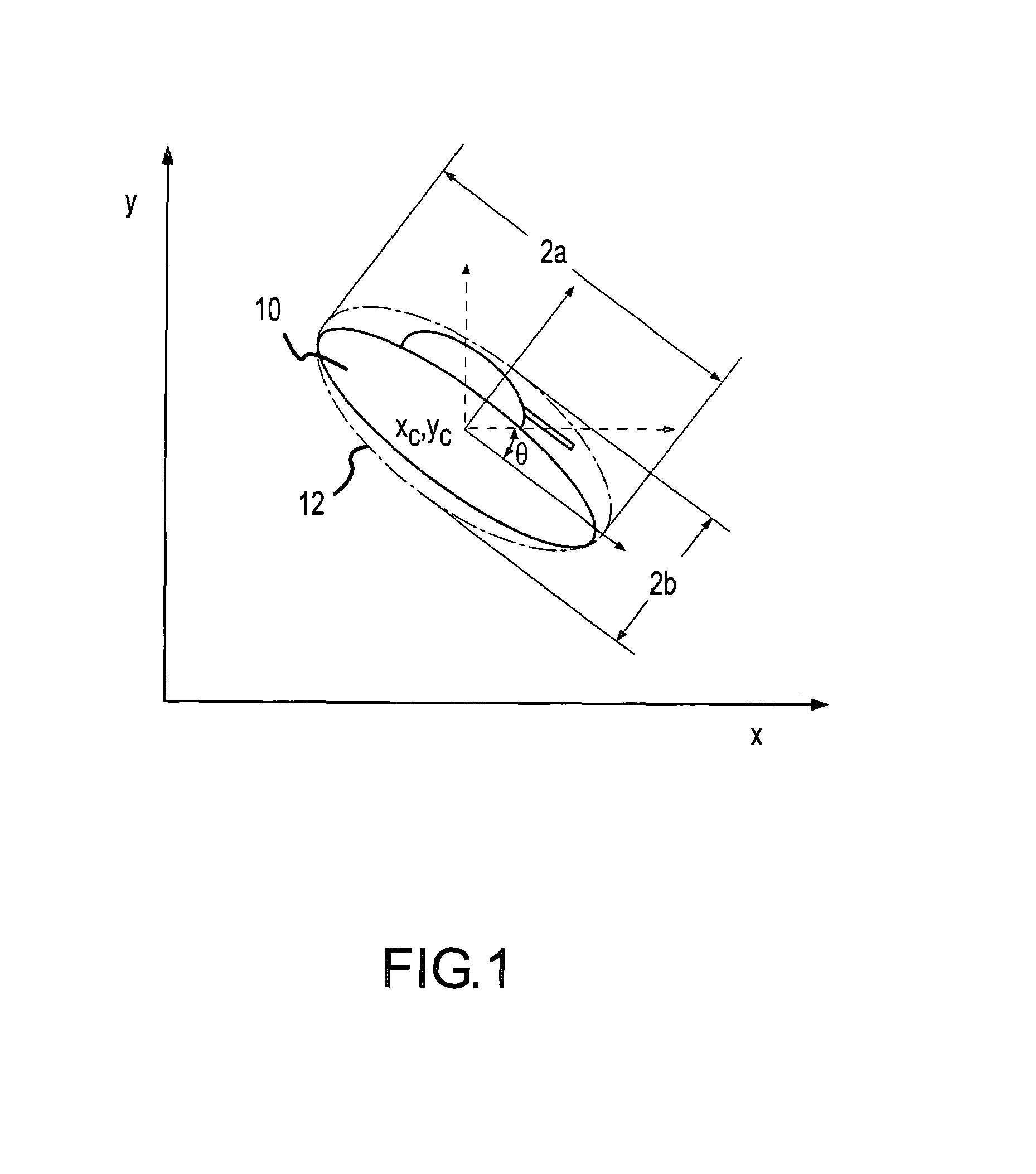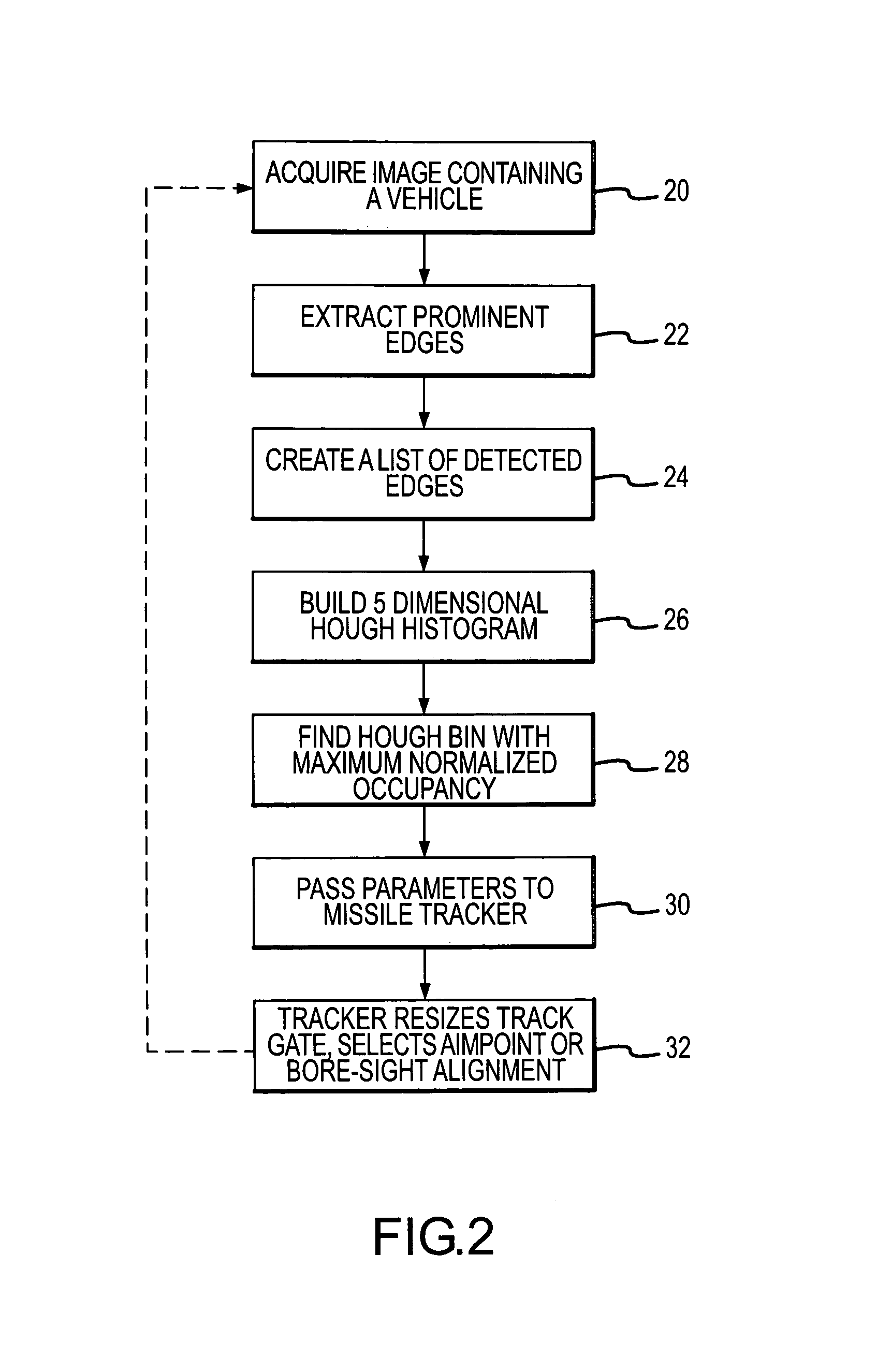Vehicular target acquisition and tracking using a generalized hough transform for missile guidance
a generalized hough transform and target acquisition technology, applied in direction controllers, instruments, weapons, etc., can solve the problems of track point impacting an undesirable portion of the target, missile to miss the target, maintenance of a conformal gate, etc., to achieve efficient handover and improve aimpoint designation
- Summary
- Abstract
- Description
- Claims
- Application Information
AI Technical Summary
Benefits of technology
Problems solved by technology
Method used
Image
Examples
Embodiment Construction
[0032]The present invention provides a method for acquiring and maintaining a conformal track gate to a vehicular target. This is accomplished by recognizing that most vehicles have silhouettes that may be described as a “rounded rectangle”. As such, a method of describing the position and shape of such rounded rectangles in terms of 5 parameters (xc, yc, a, b, θ) was formulated. In tracking problems, the position and size of the target, and hence the track gate, is approximately known. This information is utilized to find the “rounded rectangle” that best fits edges that are extracted in the vicinity of the track gate. Using the parameters of the “rounded rectangle”, the track gate may be redefined to be more conformal to the boundaries of the target to exclude clutter and make the tracker less susceptible to breaklocks. This capability is used to improve gate handoff from the automatic target recognizer (ATR) to the missile tracker, changing aspect ratio of maneuvering targets, li...
PUM
 Login to View More
Login to View More Abstract
Description
Claims
Application Information
 Login to View More
Login to View More - R&D
- Intellectual Property
- Life Sciences
- Materials
- Tech Scout
- Unparalleled Data Quality
- Higher Quality Content
- 60% Fewer Hallucinations
Browse by: Latest US Patents, China's latest patents, Technical Efficacy Thesaurus, Application Domain, Technology Topic, Popular Technical Reports.
© 2025 PatSnap. All rights reserved.Legal|Privacy policy|Modern Slavery Act Transparency Statement|Sitemap|About US| Contact US: help@patsnap.com



